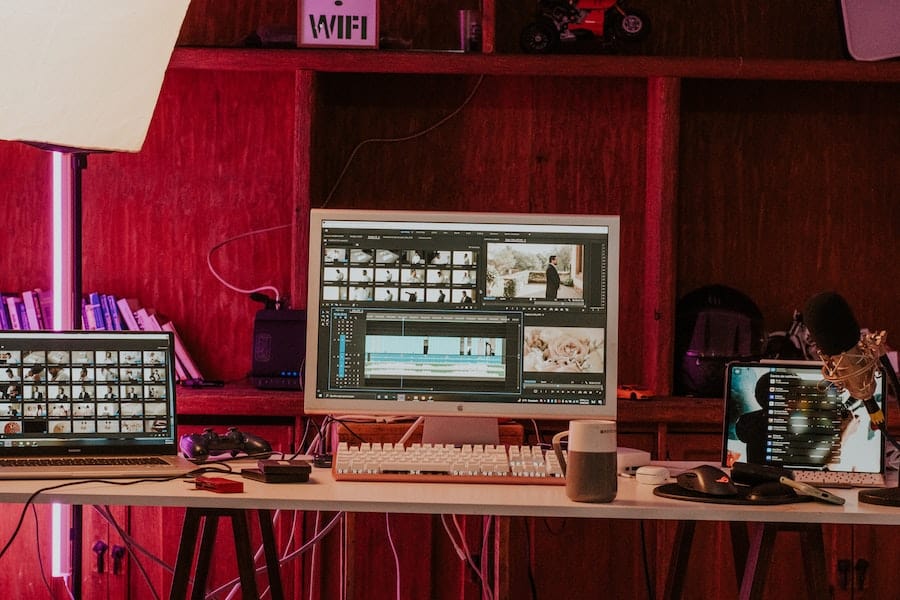As an upcoming creator, you need to learn about overcoming common video editing challenges to be in a position to grow your skills.
Video editing is a skill that takes years to fully master, and there are always new editors and features coming out that might be hard to keep up with.
Regardless of the platform, some issues are consistent and come up for most creators, so you should know about them and how to fix them. YouTube thumbnails play a crucial role in overcoming common video editing challenges by capturing viewers’ attention and increasing click-through rates. Explore Adobe’s tools for creating captivating thumbnails to enhance your video’s visibility and engagement. Here is a list of the most common issues to get out of your path to professional video editing;
Overcoming Common Video Editing Challenges
Video editing is a growing career that will have a lot of value in the coming years, and some new split-screen editors offer unique features. These skills are vital for editors, so what can keep you from this dream, and how can you get past it?
1. Video Quality reduced After editing
Sometimes, you load a high-quality video onto the editor and realize the quality worsens after the edit. This is a common complaint among video editors on many platforms.
The video could become blurry, pixelated, flicker, get choppy, or just lose its smooth playback. This mostly happens if you unknowingly change your video settings or the app changes them by default.
Small changes like resolution or frame rates and changing the color encoding systems can have major effects on the output.
How to Fix It
Check your video settings before editing, and make sure they are the same before you download the final edit to avoid poor video quality.
Don’t mess with the frame rate, pixels, video codec, and other settings unless you know what will happen and it is an intentional change.
You must also use a high-quality video source throughout your editing process. Don’t change the video format during editing or rendering. Use the format that recorded the video in editing it, and you will be able to maintain the quality.
2. Dead pixels on the final edit
Dead pixels are spots that appear on the video; stuck pixels are red, blue, and green, and they affect the video quality.
Dead and stuck pixels appear when the transistor doesn’t have enough power at that part of the screen, allowing light to go past the RGB layer.
Dead pixels are a manufacturing flaw that causes black spots to appear when RGB sub-pixels permanently turn off. This means that that point of the screen can’t show images, so it leaves a mark and is difficult to remove.
How To Fix It
The first place to look at this issue is the camera. If your camera has a pixel defect, you should return it or get a new one of better quality. Always check the pixel issue in cameras by shooting in dim light.
If the issue isn’t the camera, you should look for software plugins available online to fix the problem. Some video editing software has this feature, so check it out or try a different editor.
3. Computer reducing performance when editing
Video editing apps have a lot of features, and they use most of the computer’s processing power. If your computer’s specs don’t match the demand of editing large videos or installing video editing software, you will experience a computer crash.
Sometimes, your computer will slow down or hang for a few minutes, especially when working on heavy files. This might sometimes lead to the loss of meaningful work files or the corruption of videos.
How To Fix It
The best way to deal with this issue is to ensure your imputer can handle the workload of editing large video files. Get a computer with the best system requirements, including RAM, CPU, and GPU.
Update your computer OS, drivers, and software before installing new video editors. Close all other applications to relieve the CPU before loading your editor, and disconnect the internet to avoid background downloads and automatic updates.
If your video is large, divide it into smaller footage and edit them separately to reduce the toll on your system.
Too many graphics and special effects will increase the demand on your CPU, so it is best to use them on shorter videos unless you have a powerful computer.
4. Software Crashing while in use.
Software is manmade, and it is bound to have bugs or some features that overload it. The more high-end software will rarely have this problem, but most beginners who use free platforms will experience it.
You can sometimes download a corrupt third-party plugin with bugs that cause your editing software to crash. These plugins create more power requirements for the app, which will shut down if your computer can’t keep up.
How To Fix It;
You ought to be careful about the plugins you add to your software. Read customer reviews and developer information and remove plugins that constantly generate error messages on your editor.
Don’t overuse special effects in a video, and if you notice the editor slowing down, cut the video or reduce your working speed.
5. Corrupted video files post-editing
Video corruption is one of the worst issues since it almost always forces you to redo all your work. Technical faults in your editor or computer can lead to this, especially for cheap, free video editing software.
How to Fix It;
The best solution for corrupt video files is to use professional repair apps from high-end developers. Ensure it is good enough to fix all issues with corruption, like video frame errors, movements, and video sliders.
Conclusion
You will now have an easier time overcoming common video editing challenges, and your learning process will be much simpler.
Video editing skills have always been in demand, and the increase in video marketing is making this even more popular.
Professional video editors get paid thousands for their skills, and you can make money on your channel with these skills. You just need to get good editing software, a powerful computer, the right teacher, and a high-quality camera, and you are good to go.








